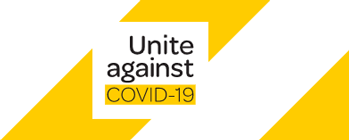
Wednesday March 30, 2022 11:55
Entry and Working Safely in a Confined Space:
When You Plan a Confined Space Entry, Don’t Just Plan to Get In - Plan to Get Out
In this newsletter we are further examining one of the least recognized hazards in many workplaces, yet one of the deadliest!
WorkSafe New Zealand accepts the Standard AS 2865 Confined spaces as the current state of knowledge on confined space entry work.
What does the standard require?
Issue a written authority for entry to work
- The PCBU or person responsible for the work should issue a written authority – or confined space entry permit – as described in the Standard. Essentially, this permit is a safety checklist to make sure nothing is overlooked.
- Working with a stand-by person
- Have a trained stand-by person to monitor the safety of the person working inside the confined space and to take action if an emergency arises.
- Ensure there is a reliable system of communication – by voice, radio, hand signals, hard-wired communication etc.
- Monitor and maintain control measures
- Test the air in a confined space constantly as oxygen and gas levels in a confined space can change quickly.
- Be alert for any change in conditions.
- If conditions change, evacuate the confined space
- If necessary, there should be a system for getting a worker out of the space quickly if anything goes wrong. This could include using a safety harness and lifeline attached to a tripod.
DANGER – Confined space – Permit must be completed and authorized prior to entry
Controlling the risks
- The control measures should be applied in the order given earlier (beginning with elimination, followed by minimisation). Consider the following issues:
- Can work be done without entry to the confined space?
- Always, as a first step, check to see if the work can be done with equipment from outside the confined space. The golden rule is: Don’t go in if you don’t have to.
Training
- Provide training for all workers who may be involved in confined space work, including stand-by persons, to ensure they have the skills to safely do this work. Regularly reassess their competency for working in confined spaces. Workers who use detectors to test whether the atmosphere is safe must be trained to use them correctly.
Safety n Action have specific training courses on entering and working in confined spaces that are recognized by New Zealand Qualification Authority and credited to applicable NZ unit standards.
- Confined space emergency procedures:
- Have a site-specific emergency procedure and emergency equipment for every confined space job. This will include:
- First aid
- Firefighting equipment
- A rescue procedure for workers who may be injured or incapacitated
- PPE and RPE for rescuers
- Emergency contact details register.
- Rescue procedures should be tested to make sure they are safe and effective – it is not easy to extract a person from a confined space. When testing rescue procedures, make the situation as realistic as possible. The victim and the rescuer are likely to be wearing PPE and RPE that may make it more difficult to extract them.
This quick guide is a brief summary of the standard and does not provide all the information required for safe working in a confined space.
For further information:
AS 2865 Confined spaces. Available from SAI Global at: www.infostore.saiglobal.com
Personal protective equipment – a guide for businesses
Respiratory protective equipment (RPE) – advice for businesses
Test the atmosphere for toxic and combustible contaminants
- Test for toxic contaminants (e.g. hydrogen sulphide, methane, carbon monoxide) and flammable contaminants (e.g. petroleum vapours).
- You need to use appropriate detection equipment, which should be correctly calibrated at regular intervals.
Ventilate the confined space if necessary
- Ventilate the confined space by using a blower designed for the purpose. When blowing air into the confined space, make sure high volume of air is blown in at a low speed – this can be provided by trunking and a blower made especially for this purpose. Then test again for levels of oxygen and other gases to ensure that contaminants are reduced to below the Workplace Exposure Standard, or a safe level.
Select appropriate breathing apparatus if necessary
- If the space can’t be ventilated, or if the work will contaminate the atmosphere (e.g. hot work, painting, sludge removal), use a suitable self-contained breathing apparatus or supplied-air respirator.
Selecting the right personal protective equipment (PPE)
- PPE provides protection for workers when all other control measures can’t eliminate or minimise the risk. PPE is the lowest control and shouldn’t be the first or only control measure considered. PPE can include:
- Respiratory protective equipment (RPE)
- Safety helmet
- Gloves
- Hearing protectors
- Safety harness
- Lifeline.
- Take care when selecting the right PPE for an emergency response. As well as respiratory protective equipment (RPE), this could include items such as safety helmet, gloves, hearing protectors, safety harness and lifeline.
Record of documentation
- Ensure all documented records – permit to work, worker training records, PPE issue etc are carefully and securely stored for future reference.
If you have concerns around this topic or other H&S matters, your Securo consultant is available to help and assist you, so please give them a call or alternatively, you can contact Securo head office on 0800 55 33 44.


